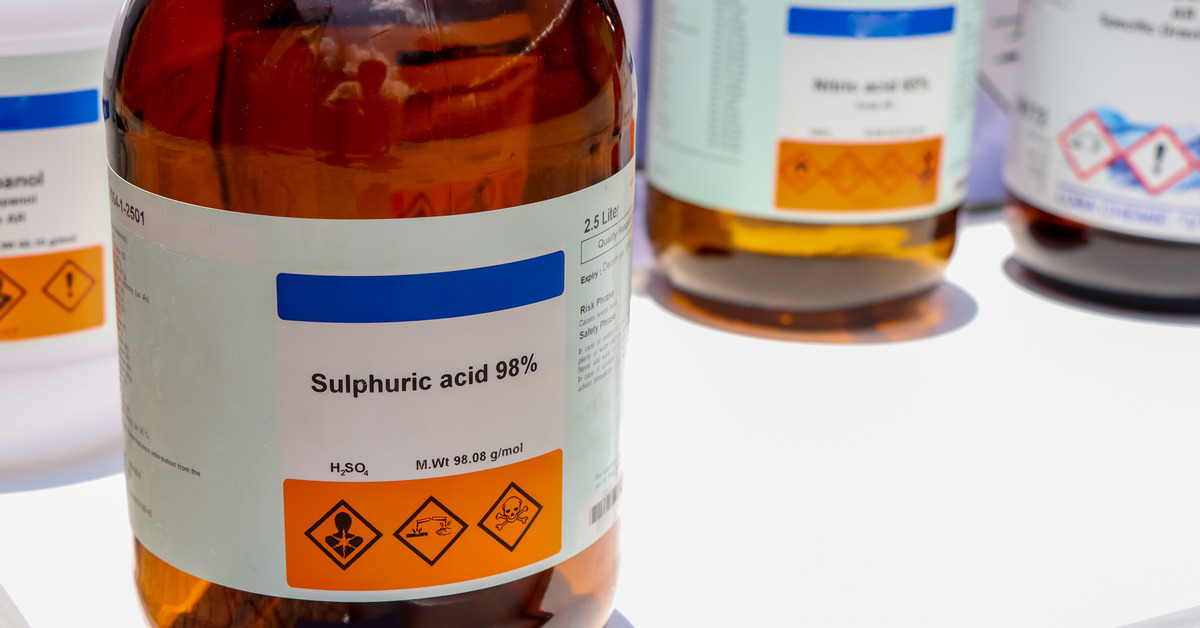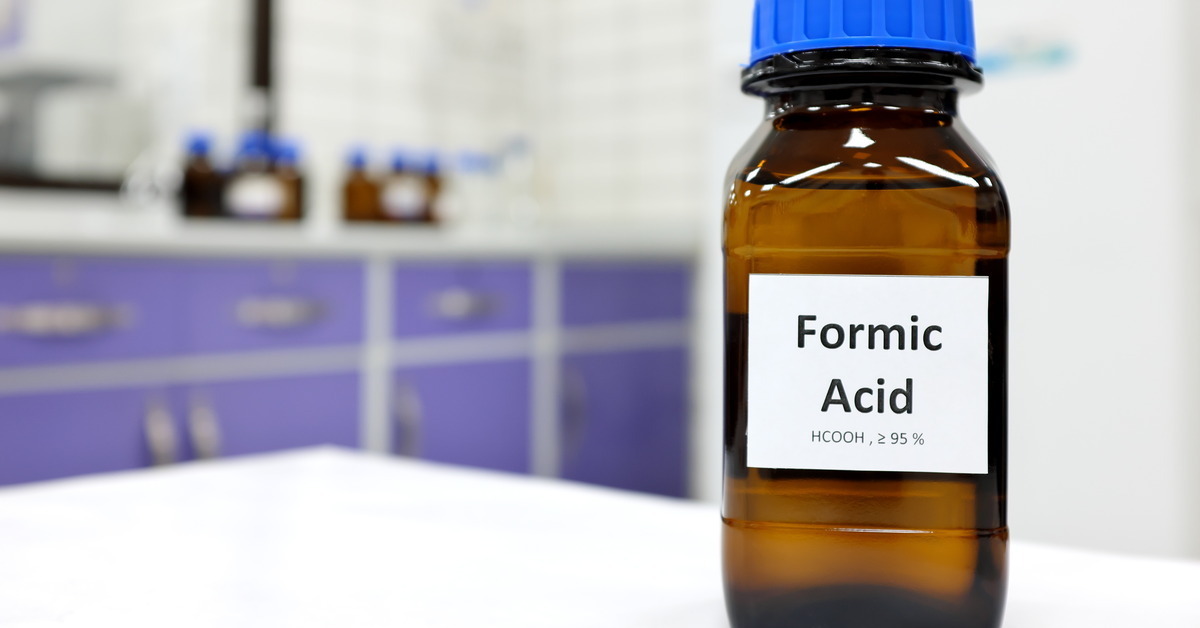A Guide to Commonly Used Acids in Laboratories
Laboratories are dynamic environments where scientists and researchers conduct experiments, analyze samples, and make groundbreaking discoveries. Behind these scientific breakthroughs lie various chemical substances crucial in multiple laboratory processes.
Among these substances, acid holds a prominent position due to its diverse applications across different scientific disciplines. Each acid has unique properties that achieve different results depending on the nature of the laboratory process.
This guide to commonly used acids in laboratories explores their properties, applications, and safety considerations. By understanding the characteristics and uses of these acids, laboratory professionals can ensure the efficient, safe handling of these chemicals in their scientific tasks.
Hydrochloric Acid
Hydrochloric acid, also known as muriatic acid, is a strong, highly corrosive acid widely used in laboratories. With its distinctive pungent odor and clear color, hydrochloric acid serves as a chemical reagent, aiding in the analysis and synthesis of compounds.
Additionally, hydrochloric acid adjusts the pH in laboratory experiments. It’s also popular for cleaning and etching and is used in producing pharmaceuticals, dyes, and food additives. Despite its utility, users must still handle hydrochloric acid cautiously due to its corrosive nature, taking proper safety measures and using protective equipment.
Nitric Acid
Nitric acid is a highly corrosive, reactive acid widely used for producing fertilizers. It’s a key component in manufacturing ammonium nitrate, an essential nitrogen-based fertilizer. Nitric acid aids in making explosives such as trinitrotoluene (TNT) and manufacturing dyes, plastics, and pharmaceuticals.
This acid is also helpful for etching and polishing metals and producing nitrate salts for various purposes. Due to its strong oxidizing properties and corrosive nature, you must exercise caution while handling and storing nitric acid.
Sulfuric Acid

Sulfuric acid, one of the most widely used acids in laboratories, is a powerful, corrosive acid with many applications across different scientific fields. Known for its versatile nature, quality sulfuric acids are essential in chemistry, manufacturing, and research processes. Sulfuric acids are commonly employed in various laboratory procedures, including:
- Dehydrating agent: Sulfuric acid has powerful dehydrating properties, making it a valuable tool for removing water molecules from substances. It dehydrates organic compounds, facilitates polymerization reactions, and converts alcohols into corresponding alkyl halides.
- Catalyst: Sulfuric acid acts as a catalyst in several chemical reactions, accelerating the reaction rate without changing permanently. For example, it’s a catalyst in the synthesis of esters, particularly in the Fischer esterification process.
- pH adjuster: The strong acidity allows for precise pH adjustments, making sulfuric acid essential in various analytical techniques and experiments.
- Cleaning agent: Due to its powerful oxidizing properties, laboratories use sulfuric acid as a cleaning agent to remove stubborn stains and contaminants from glassware and equipment.
Storing sulfuric acid in appropriate containers away from incompatible substances and kept in a well-ventilated area is crucial to prevent the release of harmful fumes.
Acetic Acid
Acetic acid, or ethanoic acid, is a weak acid with a pungent smell and a sour taste. Laboratories use it for settings for various purposes. One of its main applications is as a solvent for chemical compounds, making acetic acid invaluable for extraction, dilutions, and synthesis.
This acid is also commonly used as a pH regulator, adjusting the acidity of solutions in experiments. It also serves as a preservative, preventing the growth of bacteria and fungi in biological samples and reagents. Its versatility and relatively low toxicity make acetic acid a staple in laboratories, ensuring the accurate execution of scientific procedures.
Citric Acid
Citric acid, a natural compound found in citrus fruits, is prominent in laboratories. Its acidic properties make it a valuable additive in various lab processes. Citric acid is a chelating agent, helping to bind and remove metal ions from solutions. This property proves essential in lab applications such as complexometric titrations and metal analysis.
Its ability to lower the pH levels of solutions makes citric acid useful in buffering and adjusting acidity. It also inhibits the growth of microorganisms in laboratory samples and reagents. Its diverse uses and relatively low toxicity contribute to accurate, reliable scientific experimentation and analysis.
Formic Acid

Formic acid, or methanoic acid, is a colorless, pungent-smelling liquid. Its laboratory applications vary greatly, including in organic synthesis and fuel cells as well as a preservative in livestock feed. Formic acid is a versatile reagent and is useful for its ability to act as a reducing agent. The acid is also used in the production of dyes, pharmaceuticals, and pesticides.
Laboratories use formic acid in analytical techniques such as high-performance liquid chromatography (HPLC) and mass spectrometry (MS) for sample preparation and derivatization. Always handle formic acid with care, adhering to proper safety measures, as it’s corrosive and can cause skin and eye irritation.
Phosphoric Acid
Phosphoric acid, also known as orthophosphoric acid, is a highly versatile compound. Its dominant use is as a reagent in analytical chemistry, especially in acid-base titrations and pH control. Phosphoric acid is valuable in determining phosphorus in various samples, such as water, soil, and biological materials.
The acid is also an essential component in preparing buffer solutions, aiding in maintaining a stable pH range for various chemical reactions. Phosphoric acid is often used as a cleaning agent for laboratory equipment due to its ability to remove mineral deposits and scale buildup. Its laboratory utility stems from its strong acidic properties.
Hydrofluoric Acid
Hydrofluoric acid (HF) is a highly corrosive, toxic acid. It’s famous for dissolving silica-based materials, such as glass and quartz, making the acid essential for etching and cleaning glassware and laboratory equipment. Due to its unique properties, hydrofluoric acid is also used in certain analytical techniques, such as spectrophotometry and chromatography, where it assists in preparing specialized reagents and solutions.
Hydrofluoric acid requires extra caution and stringent safety measures when handling, as it can cause severe burns and has the potential to penetrate tissue and affect the nervous system. Proper training, protective equipment, and proper ventilation are essential when working with hydrofluoric acid for the safety of laboratory personnel.
Understanding the properties, applications, and safety considerations of commonly used laboratory acids ensures scientific experiments and processes uphold efficient conduct. The responsible use of laboratory acids is vital for the success of scientific endeavors and the safety and well-being of laboratory personnel and the environment.
Recent Posts
-
The Role of Desiccants in Protecting Hygroscopic Chemicals
Hygroscopic chemicals readily absorb moisture from the surrounding environment, leading to compromis …May 19th 2025 -
All About Pairing Containers With Corrosive Substances
Handling corrosive substances is critical in many industries, including manufacturing, pharmaceutica …May 12th 2025 -
Why Solvent Purity Is Crucial in the World of Chemistry
When producing accurate and reliable results in chemistry, solvent purity is non-negotiable. Many se …May 11th 2025




